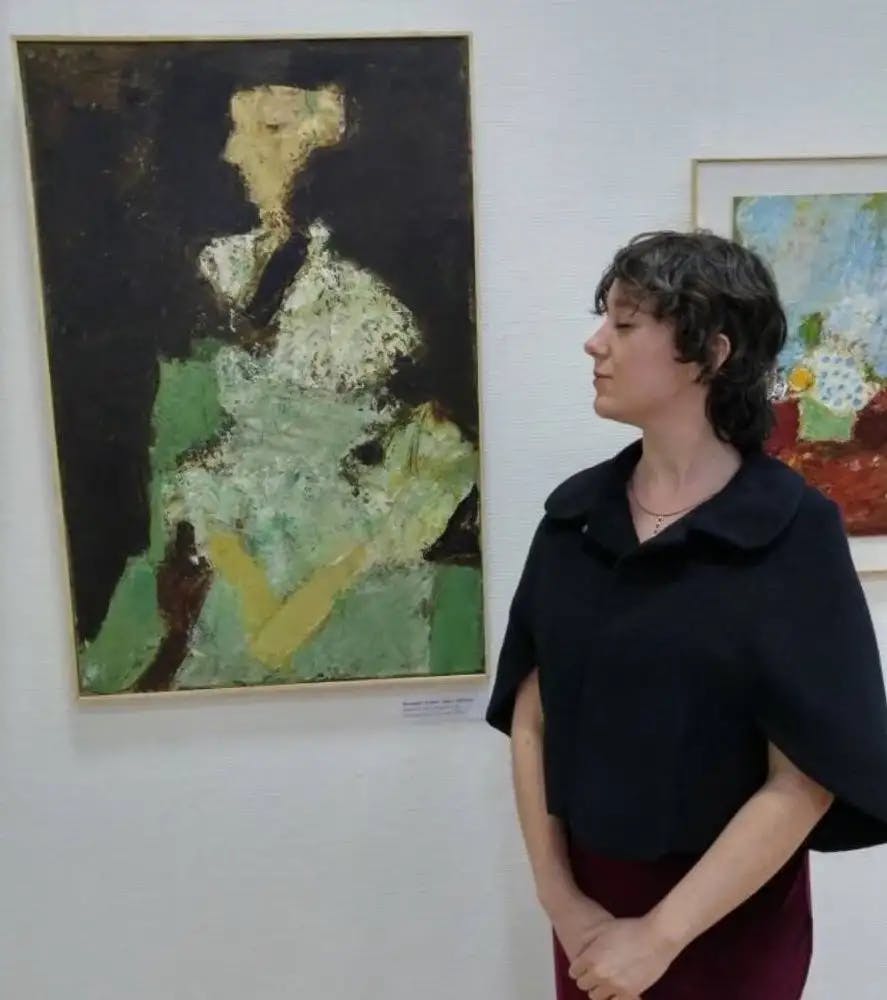
Selfies in the Museum
Time and time again, art historians will both praise an institution’s efforts for accessibility while mocking them for catering to social media. I grew up near DC and was lucky enough to have my choice of free museums, art galleries, and institutions to visit. Yet, with a world of museums and exhibitions at my fingertips, the places I would find myself drawn to were consistently the exhibits I’d see on my social media feeds, where friends and family would post beautiful pictures of themselves amongst the art. These are the exhibitions that I see over and over again, each photograph as beautiful as the last, and I’d think: “Wow! These pictures are gorgeous. I should go check it out!” Those are the shows that I would actively seek out, and once I’m there, I can then learn about the meaning behind the exhibit and the message the curators are trying to convey. Once I’m there, I can put on my Art History glasses and go study the colors and compositions of the artworks. But what’s really going to get me through the door are those social media posts.
Though it seems like an easy gut-reaction to criticize “those youngsters behind their screens’’ or this generation’s “inability to experience life without technology,” we live in an age where the Internet and social media are so entangled in our everyday existence that it becomes nearly impossible to separate the two. But why should these aspects of life be separated at all? Simply because that’s how it used to be? To condone museums for catering to social media, which is essentially free advertising towards a younger generation on a widely accessible platform, is to adhere to the same restrictive elitism that has plagued the art world for centuries.
The tradition of the museum began in private collections of the eccentric European wealthy, who would collect art and artifacts from around the world, not uncommonly stolen and grifted items. Some collected art, biology, historical artifacts, technology, or a variety of all four. These were private collections meant for the collector and their close friends; curtains would often hide the more scandalous or titillating pieces, meant only for the most intimate viewings. Art collecting was a pastime that suggested wealth and taste, and was in all ways a means to show off to one’s contemporaries. Over time, these private curio cabinets slowly became more public. Even as they entered a semi-public sphere, the collections remained as entertainment for a select few who had the time and money to travel to view them, which was predominantly white wealthy European elite. Commoners — the dreaded public — were still not welcome at such events. Even as museums slowly and begrudgingly became open to this public, in large part due to the French Revolution, art museums continued to be marketed as places of study, taste, and sophistication. With those terms came a simple rebranding of the inbred elitism that continued to limit who was deemed worthy to enjoy and consume art. If one was not refined or scholarly enough to get it, then they continued to be regarded as the uneducated commoner who was not a part, and not welcome, in this high-class collector society.
For the first time in history, museums are actively starting to take an interest in this long-overlooked patron. Educational and social programs are being created to lead tours and workshops for students, patrons from under-resourced areas, and audiences with physical or mental disabilities, all of whom have been historically left out of the museum sphere. Accessibility programs attempt to bring art to people who would otherwise be unable to enjoy or access the collections.
For years, only the wealthy could commission artworks. Only the wealthy could own art, and only the wealthy were afforded the pleasure of seeing cultural collections. This is no longer the case. Money is no longer the only factor that determines whether people can access or interact with artwork. Visitors do not need an expensive education to enjoy wandering into an art museum. People of all backgrounds can now go and interact with art on their own terms. The family from a small US town, who has been saving up for years for a family vacation to Paris, can now go into the Louvre and take a selfie in front of the Mona Lisa to go back and show their friends. They, too, are now immortalized with the most famous painting in the world. The photograph is itself a new artistic creation that shows how far we as a society have come in accessibility to art. In placing yourself in a picture with the exhibit you are supporting, you are personally reclaiming a bit of this elitist history. Picture by picture, we are bringing these collections to the public, and celebrating artwork that is accessible and enjoyable to all.
So go: take that selfie in front of the painting you love. Take pictures to bring home with you to remember your travels and recall the exhibits you saw that made you pause, think, or smile. Enjoy life and let people enjoy art on their own terms, because we are all equal in the art museum. We all deserve to be there, and the collection has been made available for all of us. We are the close friends allowed this intimate look; the curtains are all drawn aside and everything is on display for the first time in history. The person who intimately studies the color composition and brushwork of the Mona Lisa is no more worthy to be there than those crowded together to photograph it. We all have the right to enjoy and interact with art however we see fit, as we are the patrons of these institutions, and it is our history and culture that is on display.
